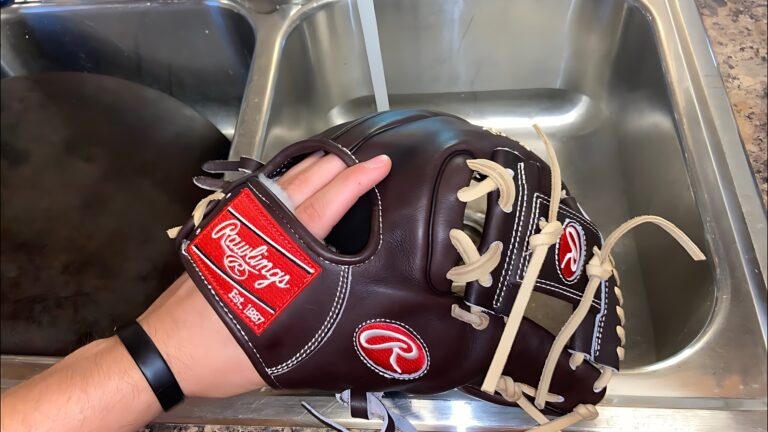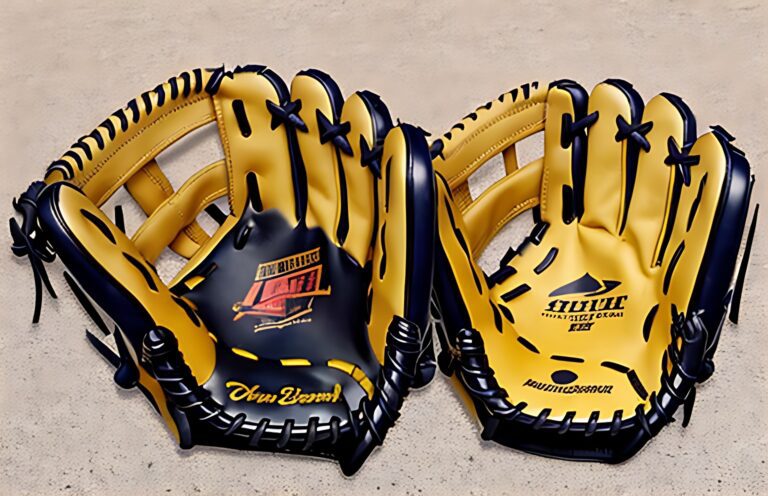How Many Acres In A Baseball Field?
Baseball has been a beloved pastime for generations, with its roots tracing back to the mid-19th century. The game has evolved over the years, with changes to the rules, equipment, and even the size of the field. One question that often arises among fans and players alike is how many acres are in a baseball field.
On average, a regulation size baseball field with a 90-foot base layout needs approximately 4.5 acres of land. However, if you’re planning to build a softball field with a 60-foot baseline, you’ll require a minimum of 1.5 acres just for the field. Let’s dive deeper into the details and explore what makes up a standard baseball field. You may read the guide on the best baseball turf shoes
How Many Acres Are in a Baseball Field?
A standard baseball field is typically composed of an infield and outfield, along with foul territory and other areas designated for players and fans. The total size of a baseball field can vary depending on the level of play and the specific ballpark, but the dimensions are generally standardized at the professional level.
In Major League Baseball, the standard dimensions of a baseball field are as follows: the distance between home plate and first base is 90 feet, the distance between home plate and third base is also 90 feet, and the distance between the pitcher’s mound and home plate is 60 feet, 6 inches.
The outfield dimensions can vary depending on the ballpark, but the distance from the home plate to the center field wall is usually around 400 feet. Additionally, there is typically a minimum distance of 250 feet down the foul lines and 325 feet in the power alleys.
Based on these dimensions, a baseball field typically covers around 4.5 acres of land. However, it’s important to note that this can vary depending on the exact dimensions of the field and the specific layout of the ballpark.
How Big is a Baseball Field?
The size of a baseball field can vary depending on the level of play, with different leagues and levels having different dimensions for their playing fields.
In the major leagues, a baseball field is typically 90 feet between each base and 60 feet, 6 inches from the pitcher’s mound to home plate. The outfield dimensions can vary depending on the stadium, with some ballparks having deep outfield walls and others being more hitter-friendly. The average outfield fence in the major leagues is around 400 feet from home plate.
For Little League play, the size of a baseball field is considerably smaller. The distance between bases is typically 60 feet, with the pitcher’s mound being 46 feet away from home plate. The outfield dimensions can vary, but they are usually smaller than in the major leagues.
In addition to the field dimensions, there are other important measurements that are used to determine the layout of a baseball field. The foul lines, which extend from home plate to the outfield fence, must be 90 degrees to the first and third base lines. The distance from the home plate to the backstop should be at least 25 feet, while the distance from the pitcher’s mound to the nearest fence, stand, or other obstruction should be at least 60 feet, 6 inches.
The infield of a baseball field is also carefully measured and constructed. The pitcher’s mound, which is typically made of clay, should be raised 10 inches above the rest of the field and be 18 feet in diameter. The bases, which are typically made of rubber or plastic, should be 15 inches square and be securely anchored to the ground. You may read also the guide on the best baseball cleats for ankle support
What are the Dimensions of a Baseball Field?
The dimensions of a baseball field are crucial to the game’s success, as they impact the strategies employed by players and coaches.
A standard baseball field has four bases, which are arranged in a diamond shape. The distance between the bases is 90 feet, which is the same for all levels of play, including amateur, college, and professional baseball. This distance is considered to be the perfect balance between speed, distance, and skill, and it has been used for over a century.
The infield is the area of the baseball field that is enclosed by the four bases. The distance between home plate and first base and the distance between home plate and third base are both 127 feet, 3 and 3/8 inches. The bases themselves are each 15 inches square and are typically made of a rubber material.
Beyond the infield lies the outfield, which is typically divided into three sections. The left field, center field, and right field. The outfield fence, which is commonly made of wood or metal, can vary in distance depending on the stadium. In professional baseball, the outfield fence is typically between 325 and 400 feet from home plate, with some stadiums having longer fences.
The pitcher’s mound is located in the center of the infield, halfway between home plate and second base. The distance from the pitcher’s mound to home plate is 60 feet, 6 inches. The pitcher’s mound is elevated by approximately 10 inches and is typically made of clay material.
Tips to Measure a Baseball Field
Measuring a baseball field accurately is crucial for both the players and the audience’s experience. Here are some tips to measure a baseball field effectively:
- Gather your equipment: To accurately measure a baseball field, you’ll need measuring tape, chalk, a spray can, and a measuring wheel.
- Start with the outfield: Begin by measuring the distance from the home plate to the center field wall. Then, use the measuring wheel to measure the distance from the center field wall to the left and right field foul poles. Once you have all these measurements, use the chalk to mark the outfield boundaries.
- Measure the infield: Measure the distance from the home plate to the first base, second base, and third base. Make sure the bases are 90 feet apart. Use the measuring wheel to measure the distance from the pitcher’s mound to home plate and mark it with chalk.
- Mark the foul lines: Use the spray can to mark the foul lines from home plate to the left and right field walls. Make sure the foul lines extend all the way to the outfield wall.
- Check your measurements: Double-check all your measurements to ensure that everything is accurate.
By following these tips, you can accurately measure a baseball field and ensure that it meets the required dimensions for regulation play.
How Much Does it Cost to Build a Baseball Field?
The cost to build a baseball field can vary greatly depending on various factors, such as location, size, materials used, and additional amenities. Generally, the cost can range anywhere from $5,000 to $1 million or more. For a basic youth league field, the cost can range from $15,000 to $50,000, while a more professional-level field can cost upwards of $1 million or more.
Factors that can impact the cost include the need for grading and leveling of the land, the type of turf or grass used, the installation of fencing and dugouts, and the addition of lights and irrigation systems. It is important to note that ongoing maintenance and upkeep costs should also be factored in when considering the overall cost of building a baseball field. You may read the expert guide on the best baseball cleats for flat feet
What are the Largest Baseball Fields?
Baseball is a popular sport with a rich history that is played all over the world. The game is typically played on a field that has a diamond shape, with four bases located at the corners. The size of the baseball field can vary depending on the level of competition, but there are some fields that are larger than others. Here are some of the largest baseball fields:
- Dodger Stadium – Los Angeles, California: This stadium is the largest in Major League Baseball and has a seating capacity of over 56,000 people. It measures 330 feet down the lines and 400 feet to the center field.
- Coors Field – Denver, Colorado: This field is known for its thin air and high altitude, which makes it easier for balls to travel farther. It measures 347 feet down the lines and 415 feet to the center field.
- Wrigley Field – Chicago, Illinois: This iconic stadium has been home to the Chicago Cubs for over a century. It measures 355 feet down the lines and 400 feet to the center field.
- Kauffman Stadium – Kansas City, Missouri: This stadium is known for its fountain display that shoots water into the air after home runs. It measures 330 feet down the lines and 410 feet to the center field.
- Fenway Park – Boston, Massachusetts: This historic stadium is the oldest in Major League Baseball and has a unique layout with its Green Monster in left field. It measures 310 feet down the lines and 390 feet to the center field.
The size of a baseball field can greatly impact the game, with larger fields giving batters more room to hit the ball and pitchers more space to pitch.
Conclusion
In conclusion, the size of a baseball field can vary depending on the level of play and the specific field being used. However, according to the official rules of Major League Baseball (MLB), a baseball field should have a minimum area of 1.5 acres and a maximum area of 4 acres. This includes the infield, outfield, and foul territory. The exact dimensions of a baseball field also vary depending on the specific league and field, but the average size of an MLB field is approximately 2.5 acres. You may check also the guide on the best baseball bats for 8 year olds
FAQs
What is the average size of a baseball field?
The average size of a baseball field is approximately 90 feet between each base (first, second, and third), and the distance from the pitcher’s mound to home plate is 60 feet 6 inches. The outfield dimensions can vary, but most major league stadiums have fences that are between 375 and 420 feet from home plate.
How big is a full size baseball field?
A full-size baseball field typically measures around 90-100 meters (300-330 feet) along the foul lines from home plate to the outfield fence. The distance from home plate to the pitcher’s mound is 18.44 meters (60 feet, 6 inches), and the bases are 27.43 meters (90 feet) apart.
What is the hectare of a baseball field?
The size of a baseball field can vary, but the standard size of a Major League Baseball field is approximately 1.15 hectares or 2.84 acres. The infield is roughly 0.4 hectares or 1 acre, while the outfield is about 0.7 hectares or 1.7 acres.
How many square feet is a baseball field?
The size of a baseball field can vary depending on the level of play, but a standard professional baseball field typically measures around 90,000 square feet. This includes the infield, outfield, foul territory, and warning track.







